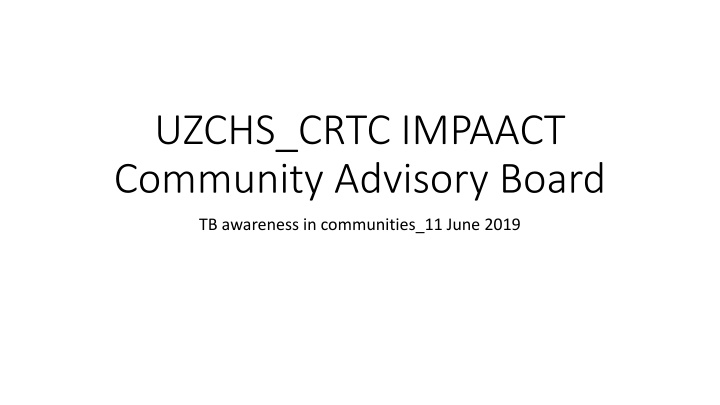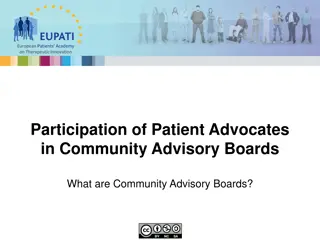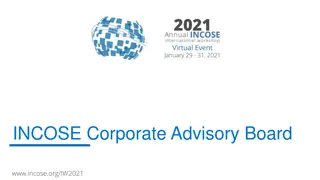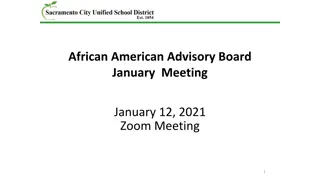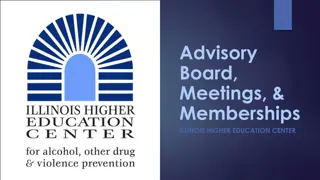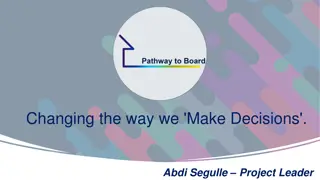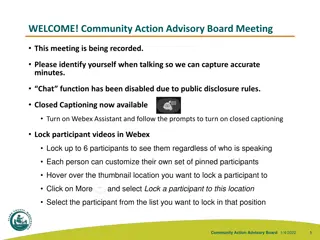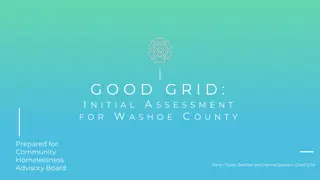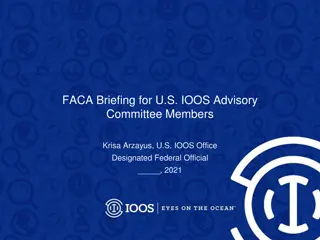UZCHS_CRTC IMPAACT Community Advisory Board
This content highlights the establishment of UZCHS_CRTC.IMPAACT Community Advisory Board for TB awareness in diverse communities. It discusses concerns such as limited TB regimens, drug interactions, lack of support, and challenges faced by women due to cultural barriers hindering access to medical assistance.
Download Presentation

Please find below an Image/Link to download the presentation.
The content on the website is provided AS IS for your information and personal use only. It may not be sold, licensed, or shared on other websites without obtaining consent from the author.If you encounter any issues during the download, it is possible that the publisher has removed the file from their server.
You are allowed to download the files provided on this website for personal or commercial use, subject to the condition that they are used lawfully. All files are the property of their respective owners.
The content on the website is provided AS IS for your information and personal use only. It may not be sold, licensed, or shared on other websites without obtaining consent from the author.
E N D
Presentation Transcript
UZCHS_CRTC IMPAACT Community Advisory Board TB awareness in communities_11 June 2019
Background UZCHS_CRTC Community Advisory Board was established in 2000 IMPAACT CAB was later formed in 2007 It comprised of 11 members form diverse communities Community Liaison officer is responsible for supporting the CAB activities The PIs also is present during the meetings and during CAB formation Stakeholders within the communities the communities represented by CAB were sensitized of the introduced cadre
Concerns INH adverse reactions not much information (outside research) Poverty Diagnostics non-availability of diagnostic machines or broken down machines No vitamin supplements supplied Little information on chronic conditions that elevate the risk of TB infection, e. g. diabetes mellitus Advocacy and funding for TB prevention and treatment seems not to be prioritised
Limited range of TB regimens make TB treatment a big burden Drug-drug interactions result in fewer options for PLHIV Need more research on TB treatment formulations for children and adolescents, as we find them being given adult formulations The intensive support that used to be given when TB was introduced is no longer being offered There is need for support groups for people with TB so as to deal with the high levels of stigma and discrimination
Women bear the brunt of the burden in the community regarding religious and cultural/ traditional practices that hinder access to medical assistance. Some churches bar their members from going to clinics for medical treatment. However, the members do not live in isolation when outside church services, hence they can continue to spread TB when there is no correct treatment. Women, as carers in the home of those who are ill with TB, are at risk of acquiring the infection.
Women who believe in medical treatment, and are in religious sects who deny it, often have to seek medical treatment behind the backs of their spouses and religious leaders This results in difficulties for women in terms of adherence as they also try to conceal the medicines This can also result in many cases of TB in the community remaining undetected The burden is multiplied several times over when the woman is disabled, or where she has to care for someone with TB who is also disabled.
TB and Disability Many times poverty is an integral part of this combination Access to health facilities is hampered by mobility difficulties as well as lack of money for bus fares Adherence may be hampered by inadequate nutrition as the person with disability may be unable to fend for themselves The pill burden may be too much to bear, particularly where the disability is mental. People with disabilities face several layers stigma and discrimination disability, poverty, TB infection, HIV infection, etc
TB studies in Zimbabwean Sites IMPAACT P1078 (Finished) IMPAACT 2001 (Finished) PHOENIX study (Currently ongoing under ACTG) A5264 A5263 A5288 A5279 A5225
Raising awareness within the communities Activity In your groups (2mins) discuss how you are raising awareness on currently going studies at your sites.
Raising Awareness Continues CAB raises managed to raise awareness on on-going studies during: Stakeholders Meetings National AIDS council Gala s Radio Shows Through local newspapers Community gatherings Sports Tournaments. ICASA
Conclusion Conclusion It is important to involve Community representation of diverse community members so that when raising awareness becomes easier (e.g Youth , People with disability) It is important to collaborate with other partners so that you have more platforms to raise awareness on on-going studies Raising awareness by CAB is very important for study enrollment and retention as community/participants can familiarize/associate themselves with CAB.
